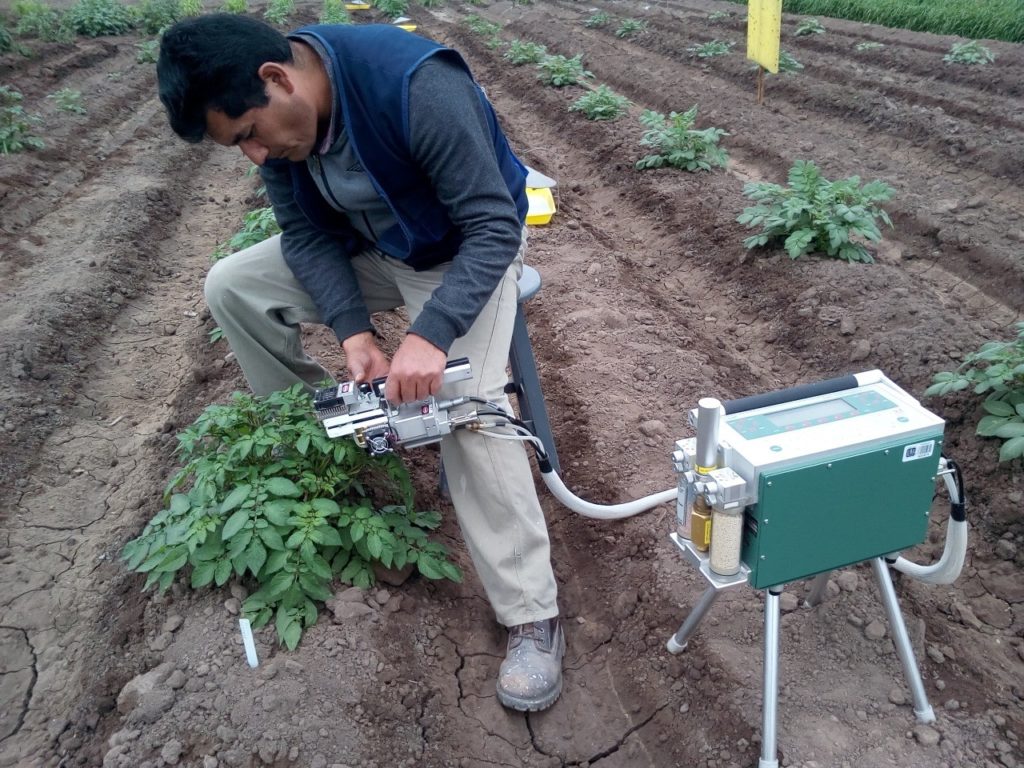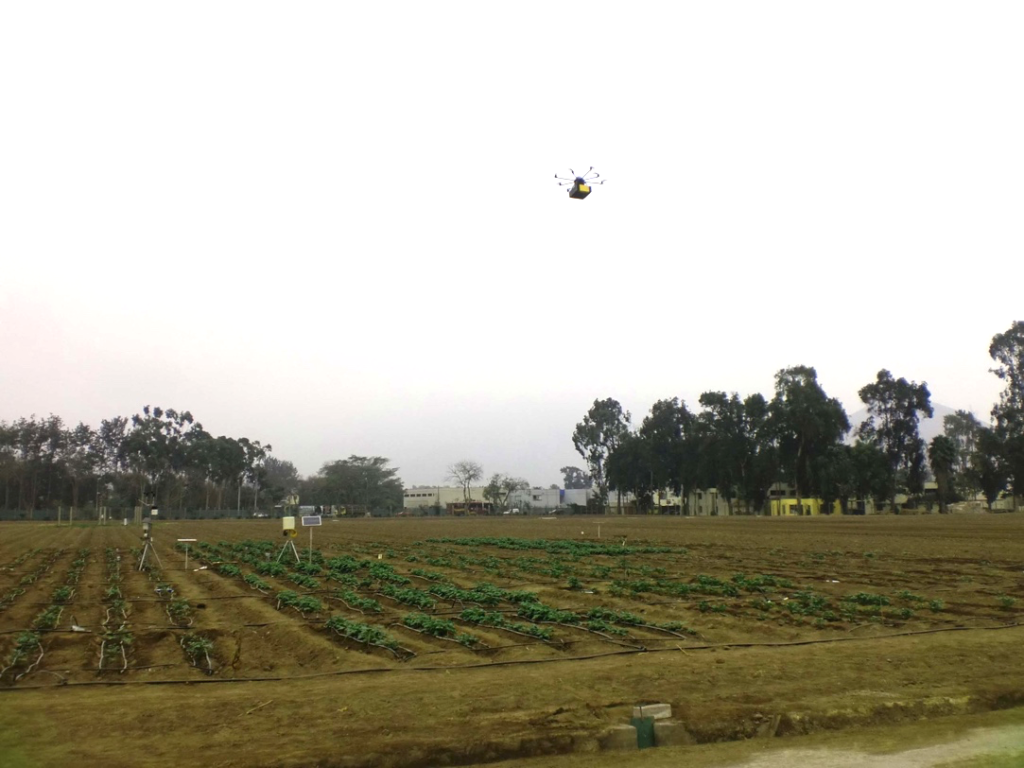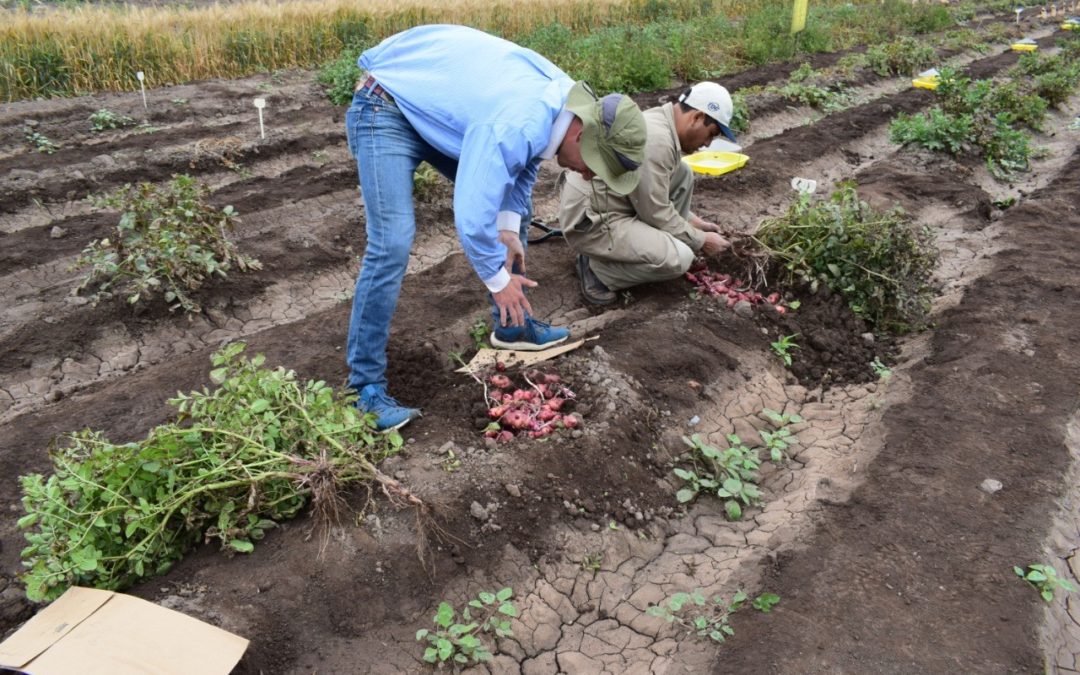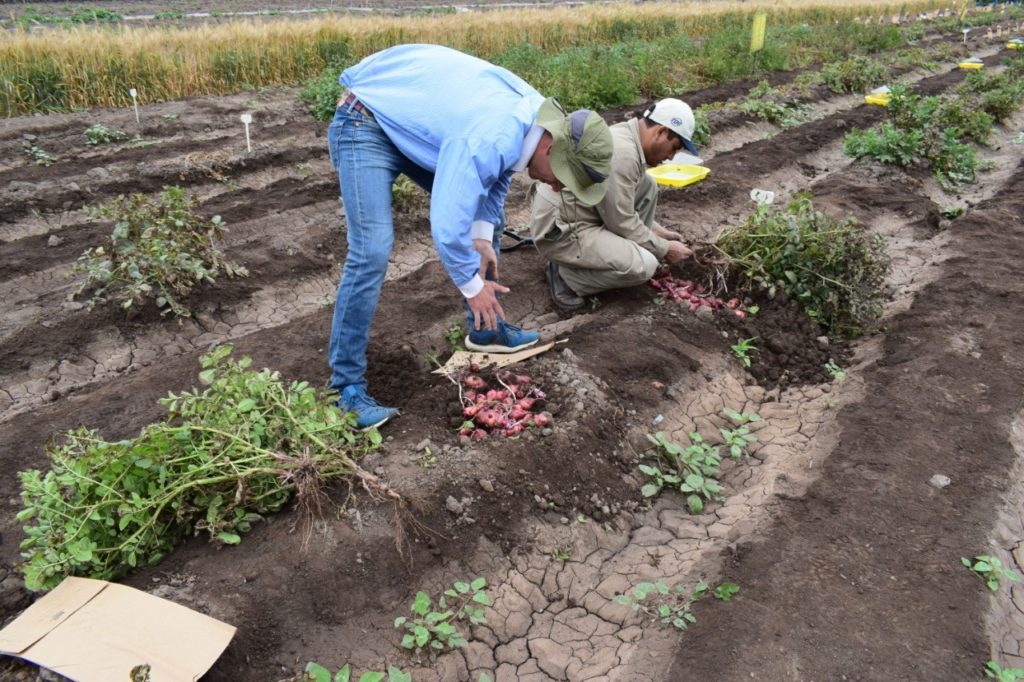New study on measuring efficiency in potato landraces: How far are we from the optimum?
A new publication by scientists from the International Potato Center (CIP) highlights the usefulness of combining crop growth model, remote sensing, and plant ecophysiological tools to assess genetic efficiencies in potato landraces.
In the face of these challenges, certain crops are vital to global food security. The potato is the third most-produced edible crop worldwide, and, therefore, a key food security crop. It has a widely adaptive range, great yield potential, and high nutritional value. There are more than 4,900 types of potatoes between traditional and improved varieties, mostly found in the Andes. In order to improve potato yield and yield prediction, a better understanding of potato physiology and modeling is needed, especially for the Andean region where climate change is affecting traditional farming practices and where potato is a staple food.
While pests and diseases have been considered as the main drivers of yield gap in highly important crops like potato, there is a potential that it is poorly explored and depends on the genetic expression of three efficiencies: i) How well is the foliar arrangement and density to capture light (efficiency in the light interception – Ei), ii) How well is the capacity to process this energy for carbohydrates conversion (efficiency in the radiation use- Er), and iii) How much fixed carbohydrates arrive or are stored in the edible plant organs (partition efficiency – Ep).
Although there are some sophisticated physiological methods and procedures to measure these efficiencies, remote sensing technology allows for the exploration of new ways of estimating potato efficiencies, quickly and extensively.
The application of this technology was examined by members of BIG DATA’s Crop Modeling Community of Practice, and published in a new study: Radiation Interception, Conversion and Partitioning Efficiency in Potato Landraces: How Far Are We from the Optimum?

Photo: Javier Rinza. Jesus Zamalloa measuring photosynthesis in potatoe’s leaflets during potato minicore trial at CIP experimental station in Lima.
The acquisition of signals that are reflected and emitted by plants through electromagnetic waves (captured by special sensors) have been currently applied for various purposes in agriculture. For example, plant phenotyping through air-borne imagery recorded by unmanned aerial vehicles (UAV) allows breeders to monitor critical traits in the improvement programs in what is known as “field high-throughput phenotyping.” In the recent paper published in the peer-review journal Plants by Silva-Díaz et. al., the authors incorporated the signals reflected by the canopy in the electromagnetic waves belonging to red and infrared (using an UAV—an octocopter) into a potato crop growth model (SOLANUM) to estimate Ei, Er and Ep. The Normalized Difference Vegetation Index (NDVI) mixes both types of waves related to canopy cover, greenness (caused by chlorophyll concentration), and foliar mass so that its detection over time gives us an exciting way to analyze the crop growth.

Photo: David Ramirez. Octacopter (drone) acquiring images of the canopy of potato stand at CIP experimental station.
According to Silva- Díaz et. al.’s previous findings, potato shows its highest Er reported in the literature (5.3 g/MJ) in cloudy environments dominated by diffuse light. The authors decided to work with 20 genotypes belonging to the most representative group of genetic diversity in potatoes from the CIP Genebank, the so-called “Potato Minicore.” Silva-Díaz and collaborators detected that productive genotypes were related to high values of Ei and Er, and thus also by an early tuber production (high precocity) and a foliar senescence delay. This last trait was measured as the capability of keeping high values of NDVI along the growing period, i.e., more chance for carbon fixation. On the other hand, they found that their Ep was very close to the optimum registered in other crops such as sweet potatoes, cassava, and corn. At the same time, the authors found that there is still an opportunity to improve traits linked to the increase in Ei and Er in potato, which requires an improvement in the photosynthetic process highlighted by some other authors.
The increasing availability of high-resolution satellite images, which is current useful for stress detection in crops and agronomic management, opens an interesting opportunity to monitor the features highlighted above (especially the delay in senescence through temporal NDVI dynamics) for yield prediction on a larger scale. These efforts require joint work between modelers and remote sensing specialists to corroborate whether what has been found in the study can be applied on a larger scale. This, together with the advances in artificial intelligence (AI) through the training of machine learning algorithms to determine hidden patterns in the estimation of growth parameters related to remote signals and tuber yield, opens the possibility for targeting the population of environments (TPE) for specific genotypes to optimize yield.
The study was possible thanks to the funding from CGIAR Research Program on Roots, Tubers and Bananas (RTB). Read the full article in Plants 2020, Volume 9 (6).
Feature photo: Javier Rinza. Jonas Wittern and Jesus Zamalloa during tubers harvesting of potato minicore trial at CIP experimental station in Lima-Peru.
July 29, 2020
David A. Ramírez
Scientist and Crop Modeling Community of Practice contributor
International Potato Center (CIP)
Lima Peru
Latest news






